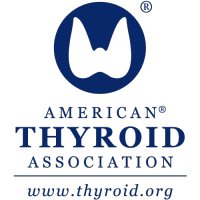This transcript has been edited for clarity.
Editor's Note: Endocrinologist and food artist Malini Gupta, MD, depicts the progression of thyroid eye disease in this series. It was made using Korean radish; turnip; peach; kiwi; blueberry; tapioca colored with blue spirulina; lotus root; strawberry; cucumber; and orange, yellow, and black carrots.
Thyroid eye disease (TED) has been viewed as a phenomenon seen in Graves disease of the thyroid, but it's now recognized as a separate autoimmune disease. It can be a potentially debilitating autoimmune disease. There is an emerging picture of an immunologic mechanism responsible for the orbital pathology in patients with TED. I'm going to illustrate the structural changes seen in the orbit in this series of images.
The normal eyeball is set within a fixed, bony orbit and moves with activity of the extraocular muscles. In thyroid eye disease, the orbit is infiltrated by B and T cells and CD34+ fibrocytes from the bone marrow. These fibrocytes differentiate into myofibroblasts or adipocytes.
Immunoglobulins against insulin-like growth factor 1 (IGF-1) receptors activate signaling in the orbital fibroblasts. The fibroblasts then produce hyaluronan and the cytokines interleukin (IL)-1 beta, IL-6, IL-8, IL-16, tumor necrosis factor (TNF) alpha, and CD4 ligand. The cytokines and hyaluronan expand the orbital tissue, muscles, and fat by drawing water into these tissues.
As the orbital fat expands, there is some proptosis so that the eyeball starts to push out from the bony orbit. There is swelling and redness of the upper eyelid and the lower eyelid. There is pressure on the globe, causing pain at the back of the eye. This causes further lid retraction, pain, and pressure at the back of the eye.
The eyelids continue to swell and become red. The lids cannot fully close, and there is conjunctival irritation and corneal exposure to air. The muscles continue to swell and the orbital fat compresses the optic nerve, and there can be afferent pupillary defects.
The globe proptosis leads to conjunctival irritation and dryness. Acinar cells of the lacrimal glands express thyroid-stimulating hormone (TSH) receptors. The TNF-alpha binds and results in altered regulation of pro-inflammatory and protective proteins. This changes the tear film.
The cornea can become dry. It can also experience reshaping into keratoconus. There is swelling and inflammation of the extraocular muscles. This can cause strabismus and diplopia. Extraocular muscle inflammation and optic nerve compression result in visual changes in visual acuity. Corneal dryness can lead to erosions.
A subset of orbital fibroblasts in the orbit can differentiate into mature, lipid-accumulating cells or de novo adipogenesis. Corneal dryness stimulates increased watering of the eye. Expansion of the orbital fat and the muscles can crack the bony orbit. This can drop the position of the eyeball. There is a total extraocular muscle restriction in degrees, leading to a stare of the eye.
Changes in thyroid eye disease can be unilateral or bilateral. Changes in thyroid eye disease are often gradual but can cause extensive quality-of-life changes. These can impact patient's activities, appearance, and self-confidence.
Malini Gupta, MD, started creating these anatomic images during the pandemic. Her work can be found on Instagram and Meta under @G2Endo or X under @MaliniGuptaMD. Her work can also be seen in The Ophthalmologist, The Pathologist, and Journal of Nephrology. She is the 2022 recipient of the American Association of Clinical Endocrinology (AACE) Excellence in the Humanities Award.
Follow Medscape on Facebook, X (formerly known as Twitter), Instagram, and YouTube
Cite this: Illustrating the Progression of Thyroid Eye Disease - Medscape - Nov 06, 2023.











Comments